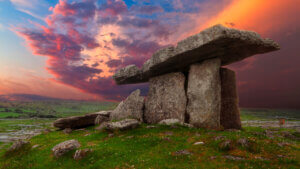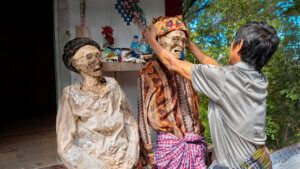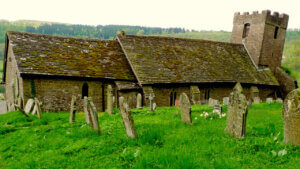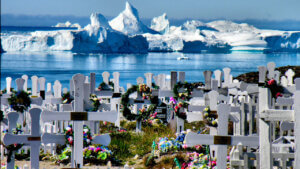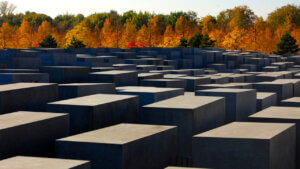France
Catacombs of Paris & Food Superstitions
Introduction
France is famous for its baguettes and cheeses. However, a lesser known fact is that food in France is sometimes linked to death superstitions. In this article we are covering these food superstitions. Additionally, we also visit the rich history of burials at the Catacombs of Paris. Finally, we talk about L’Ankou, the clearest perhaps origin of the Grim Reaper!
Catacombs of Paris
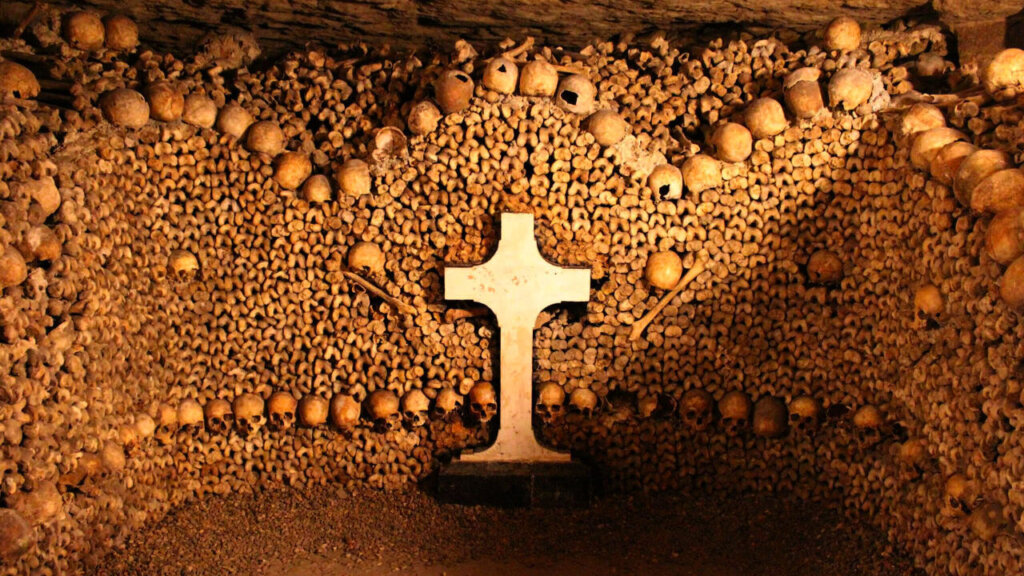
Early History of the Catacombs
Originally, Parisians buried their dead within city limits in chapel cemeteries until the late 18th century. Additionally, they often buried human remains within the walls of churches since proper burial protocols were not in place. At some point it had become common for the rotting corpses to produce a rancid odor and function as source of infectious diseases.
Therefore, in 1785 Parisian authorities had to issue a ban. According to that regulation all burials needed to take place out of the city limits from that point onward. Moreover, cemeteries were to close immediately and they had to move all the corpses to a different location. Although Aristocrats managed to transfer the remains of their dead relatives to the Père Lachaise cemetery, the rest could not. Therefore, the new regulation prompted the relocation of more than six million corpses!

Underground Labyrinth
As a result, the formation of tunnels and underground network of passages started in in 1786. And that was the beginning of the Catacombs of Paris! To this day, the Catacombs exist as a huge underground labyrinth, built to be the new home of millions of dead Parisians.
It took years for this undertaking to be completed for a variety of reasons. The main reasons it took so long were the number of corpses and the fact that transportation took place on horse carriages.
French Revolution
It was only after the French Revolution of 1789 that more official organizations started structuring the Catacombs. Because of that, the remains of Parisians were incorporated in the construction and decoration of the Catacombs. For example, bones and skulls were placed on top of each other, forming often pillars of shapes on the walls.
The transportation of corpses to the Catacombs continued until 1814. Upon completion of this challenge, the Catacombs were officially open, and a commemorative sign was placed by the entrance:
"Arrête! C’est ici L’Empire de la Mort" - Stop! This is the Empire of Death.
Catacombs & World War II
The French Resistance used the Catacombs of Paris during World War II! Because of the complexity of the tunnels, the French managed to hide from the Nazis. The Resistance even ended up choosing the Catacombs as the headquarters of their operations. Also, the tunnels functioned as the heart of the French insurrection that freed Paris by the Axis Powers.
Therefore, the Parisian Catacombs are a great example of a burial practice that led to historic changes for the living!
The Cataphiles
It is worth saying that the Catacombs of Paris remain a very popular tourist attraction. Some of the earliest well-known visitors included Charles X, Emperor Francis I and Napoleon III. However, another kind of visitors has emerged through the year – the Cataphiles.
Specifically, the Cataphiles are individuals – in most cases Parisians – that visit the Catacombs in unusual ways and and for equally unusual reasons. Despite not all parts of the Catacombs being open to the public, Cataphiles have found ways to explore the forbidden passages. Furthermore, there are even underground parties that take place in unauthorized parts of the Parisian Catacombs.
It’s safe to say Parisians continue loving the Catacombs to this day, to an extent romanticizing them. Cataphiles still enter the Catacombs, even if it means risking a fine or getting caught by the police!
Death Beliefs in Brittany
Brittany is a northwest French region. It historically has links to multiple ethnic groups, including Celtic populations from the British Isles. Because of that, Bretons still have customs and superstitions dating all the way back to Celtic times.
L’Ankou: The French Grimm Reaper
As mentioned earlier, death is not a topic easily or openly discussed in modern France. But fear of death is even more present among Bretons: Death himself can be a recently passed relative.
Specifically, people in Brittany often believe that Death, the Grim Reaper, or even more accurately L’Ankou, is a role. And this role or duty, transfers from one dead to another. The person that is most recently buried takes the role of L’Ankou from the previous deceased. Additionally, other versions say that the last person to die at the end of the year will be the L’Ankou of the new year.
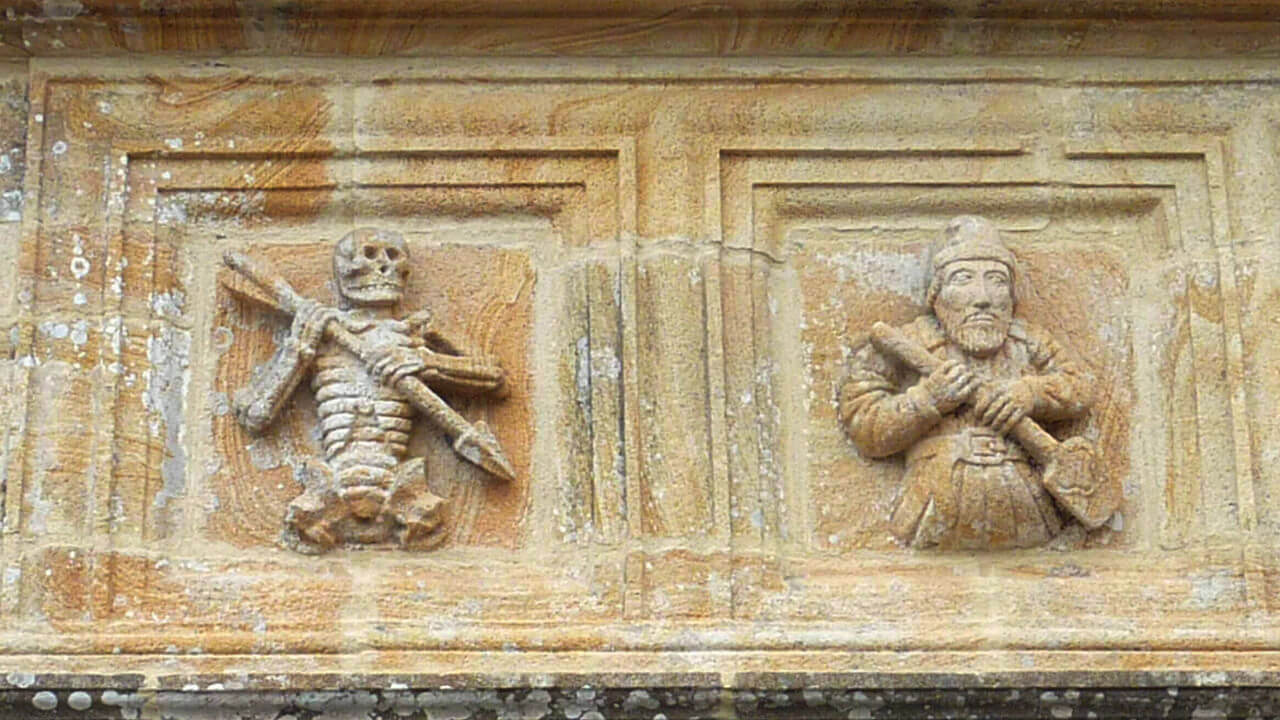
Finally, traditional L’Ankou imagery is perhaps the closest to modern Western representations of the Grim Reaper: He is a skeletal figure with a scythe to harvest the souls of humans. Moreover, he appeared with a screeching owl or on a chariot. If someone heard the chariot approaching it meant that their would die soon. Alternatively, he would appear on black boat according to customs of coastal areas.
Food Superstitions – Brittany
Bretons express perhaps their fear of death through a series of death superstitions that evolve around… food!
Cancer & Butter
First of all, a common food superstition in Brittany is related to cancer. Specifically, after someone’s death, the family leaves butter next to their dead relative. Bretons believe that butter has the ability to soak the cancer from the deceased. Because of that, once the butter has sufficiently absorbed the cancer, they buried it out of the house. This way they aim to protect the rest of family from getting cancer.
Forbidden Liquids
Secondly, keeping water in the house of the deceased is not a good idea according to Breton superstitions. This is so because they view water as dangerous for the souls of the dead. Moreover, Bretons believe that the soul experiences a newfound freedom after death. Therefore, by having water nearby, they support that the soul could slip, fall into it and drown. However, keeping milk around was not a problem!
Furthermore, another liquid that held significance for Bretons was honey. After someone’s death there was a midnight meal that including a jar of honey. However, flies that appeared around the lips of the corpse, went also at the jar of honey. Because of this, families believed that they should keep the jar full of honey, since the flies were actually carrying the soul of the dead. Therefore, honey would help them the flies and the souls with their trip to the afterlife!
Bread
Finally, our last fascinating food superstition from Brittany is about bread. The dead, according to that belief, get hungry after their burial. Because of their hunger, they had to eat dirt. Furthermore, the exact amount of dirt they consumed was equal to how much bread they ate when they were alive!
Read more
We hope you learned something new regarding this country’s death practices!
A neighboring country with very different approaches towards death and religion is Italy. For more interesting death superstitions, check out our Romania or Russia articles! Finally, Parisians are not the only ones that have incorporated death sites in their life: the Manila’s cemetery dwellers in the Philippines are another example!
Stats & Facts
The 2021 population estimate of France is 67,407,000. This makes it the 20th country with the largest population worldwide. In 2018 the average mixed death rate was 9,2 per 1.000 people.
Burials or cremations usually take place within a week after a person’s death.
Religion influences funeral practices and rites. Additionally, in France around 51% of the population identified as Christian (2016), with a Catholic majority. Therefore, most French funerals follow corresponding rites. Simultaneously secular funerals are on the rise due to the almost 40% of the population being irreligious.
The average per million population rate of utilized organs is 28,95 (2017).
Life expectancy
- Ankou
- A French Funeral
- Catacombs of Paris
- Coping with Death in France
- Crude Death Rate / France – World Bank
- Cultural Spotlight: French Funeral Traditions – Jenny Goldade (2018)
- Death Lore of Brittany – Bon Repos Gites (2019)
- France – International Registry In Organ Donation And Transplantation
- French Death Traditions: A Note on the Door – Mary Frances Knapp (2015)
- Funeral Traditions in France (2012)
- History of French Traditions
- Lower Brittany, The Land of the Dead – Sara Troop (2013)
- The Catacombs of Paris: Unique Burial Site of Ancient France – Zoe Byrne
- The Traditional Funeral Food Superstitions and Customs of France’s Brittany Region – Zoe Byrne (2014)
- What to do after a death in France (2020)
- Yann Caradec, CC BY-SA 2.0, via Flickr
- Vlastula at the English-language Wikipedia, CC BY-SA 3.0, via Wikimedia Commons
- Rijin, CC BY-SA 4.0, via Wikimedia Commons
- © Jorge Royan / http://www.royan.com.ar
- Moreau.henri, CC BY-SA 3.0, via Wikimedia Commons
- xiquinhosilva from Cacau, CC BY 2.0, via Wikimedia Commons
- Amaustan, CC BY-SA 4.0, via Wikimedia Commons
